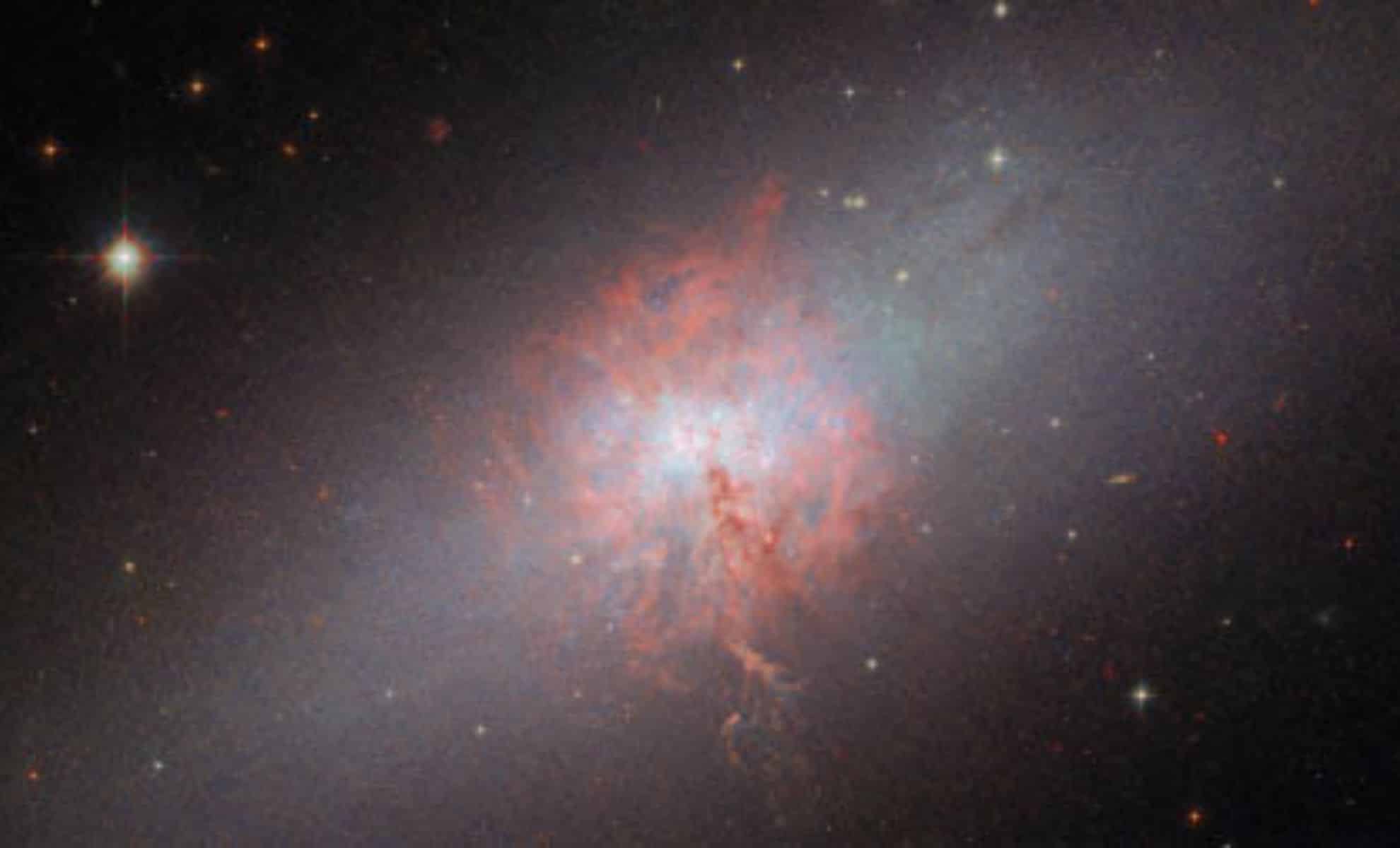The Hubble Space Telescope has captured stunning images of NGC 5253, a blue compact dwarf galaxy, revealing crucial details about its intense star-forming activities.
Located approximately 11 million light-years away in the constellation Centauri, NGC 5253 offers a unique opportunity to study stellar evolution and galaxy formation.
NASA’s Hubble Telescope observations and their significance
NGC 5253 is both a dwarf starburst galaxy and a blue compact dwarf galaxy. These designations indicate that they are forming clusters of bright, massive stars at an exceptional rate. The galaxy is a member of the Centaurus A/Messier 83 group, which includes notable galaxies such as the Radio Galaxy. Centaurus A and spiral galaxy Messier 83. The images taken by Hubble show the dense nebula consumed in the birth of these stars, making NGC 5253 a natural laboratory for studying stellar composition, star formation and star clusters.
Dwarf galaxies are of particular interest to astronomers because they resemble ancient distant galaxies and offer insight into the evolution of stars and galaxies over time. As the Hubble astronomers noted: “What so intrigued us about this galaxy that three Hubble instruments were used to study it in depth over a decade? It turns out that it lies at the focus of several areas of research where Hubble’s capabilities are essential.” .”
Starburst Activity and Super Star Clusters
Star formation rate v NGC 5253 is incredibly high, resulting in the formation of multiple star clusters. In a small region of the galactic core, the formation is so intense that it contains no less than three super star clusters (SSC). SSCs are very bright, populated and massive open star clusters that are predicted to evolve into globular clusters. Understanding the formation and evolution of these clusters is essential because their origin is not well understood.
“A tremendously high rate of star formation is the recipe for star clusters, but NGC 5253 goes beyond: in the small core region, star formation is so intense that the galaxy contains no less than three superclusters,” the HST team explained. These clusters provide a unique insight into how stars form and evolve, and highlight the importance of detailed observations in dense stellar environments.
Technology contributions
New pictures from NGC 5253 were created using data from HST’s Advanced Camera for Surveys (ACS) and the older Wide Field and Planetary Camera 2 (WFPC2). The second figure combines data from High definition channel (HRC) of the ACS instrument, which has been optimized for detailed studies of dense stellar environments.
These observations demonstrate the power Hubble instruments in taking high-resolution images and contributing to our understanding of complex astrophysical phenomena. Pictures from NGC 5253 not only reveal the vibrant star-forming regions of the galaxy, but also provide a deeper understanding of the processes that drive star formation and cluster evolution.
Future research directions
Study NGC 5253 it remains a focal point for astronomers seeking to understand stellar and galactic evolution. Future research will likely include more detailed spectroscopic analysis and comparisons with other stellar and dwarf galaxies. These studies will expand our knowledge of the conditions that lead to intense star formation and the subsequent evolution of star clusters.
As astronomers continue to explore NGC 5253 and similar galaxies, the findings will contribute to a broader understanding of the formative years of the universe and the complex processes that govern the formation of stars and galaxies. The Hubble Space Telescope’s contributions to this field underscore its importance as a tool for unraveling the mysteries of the universe.
